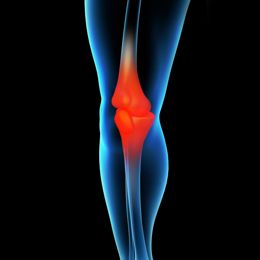Do you know what is the role of cartilage in body mechanism? Cartilage does not have blood vessels and still, it helps maintain the health of various organs in the body. Read the following article which provides information on cartilage function and types.

Cartilage is a stiff but flexible connective tissue found in many parts of human and animal bodies. For instance, cartilage is present in the joints between bones, rib cage, ear, nose, bronchial tubes, inter-vertebral discs, elbow, knee and ankle. It is stiffer and less flexible than a muscle but not as hard and rigid as bones.
Types of Cartilage
'Cartilage function' is one of the most challenging sections of histology. Cartilage plays an important role in the life of animals and fish too. Hyaline cartilage, Fibrocartilage and Elastic cartilage are the three major types of cartilage in the human body. A cartilage is made up of extracellular matrix composed of collagen fibers, ground substance that is rich in proteoglycan, and elastin fibers. The three types of cartilage, described above, differ in the relative amounts of these three main components. There are no blood vessels in a cartilage, instead, nutrients diffuse through the matrix. Compared to other connective tissues, cartilage grows and repairs more slowly. So, it is difficult to heal a damaged cartilage.
Elastic cartilage is present in the epiglottis and the eustachian tube. Fibrocartilage exists temporarily at bone fracture sites and permanently in three major locations in the body, the intervertebral disks of the spine, in the meniscus of the knee and as a covering of the mandibular condyle in the temporomandibular joint. Majority of body's cartilage is hyaline cartilage and it is found in the diarthroidal joints covering long bones. It is present in the growth plate by which long bones grow during childhood.
Functions of Cartilage
- Cartilage holds some bones together, for instance, rib cartilage. It makes the area shock-proof.
- It helps in the formation of bones in growing children. In young children, the ends of the long bones of arms and legs are made up of cartilage which gradually change into bones and grow longer.
- Cartilage is the only tissue that never stops growing! You must have noticed that some very old people have bigger earlobes and bigger nose-ends. This is because cartilage is present in those areas.
- It works just like a cushion in the joints. Preventing rubbing of bones against each other is one of the main cartilage functions. For example, the cartilage in the knees and elbows works like a cushion in the bones and helps avoid joint pain.
- Elastic cartilage is the most flexible cartilage because it contains more elastin fibers. The perfect balance of structure and flexibility provided by this cartilage helps keep tubular structures open. It is present in the outer ear, the larynx and the Eustachian tubes, for example.
- Hyaline cartilage lines the bones in joints, assisting them to articulate smoothly. It is made up of mostly type II collagen fibers. Spoiled hyaline cartilage is generally replaced with fibrocartilage, which unfortunately cannot bear weight due to its rigidity. RICE (rest, ice, compression and elevation) promotes fast recovery, in case you have torn cartilage in knee.
- Fibrocartilage is the strongest and the most rigid type of cartilage, because it contains more collagen than other types. Collagen in fibrocartilage is more of type I collagen, which is tougher than type II. Fibrocartilage is found in the intervertebral discs. It helps connect tendons and ligaments to bones. It is present in other high-stress areas and protects the joints from shocks.
Cartilage Disorders
There are many disorders which are associated with damaged cartilage function. When the cartilage is ossified or transformed into bone, it restricts the movement of the joint. Such disorders come under the group of chondrodystrophies. Degradation of cartilage in the joints is one of the main symptoms of arthritis, which leads to limited movement, inflammation of the joint and severe pain. Achondroplasia is a cartilage disorder which leads to dwarfism. In another disorder, benign tumors called chondroma are found in the cartilage.
These days, bioengineering techniques are being developed which might help generate new cartilage. Scientists are experimenting on the use of a cellular "scaffolding" material and cultured cells, as they are trying to grow artificial cartilage. This may help relieve the pain in the affected joints and can promote easy movement of the joints.
Regular exercise helps keep the joints healthy and moving. A diet that provides all the essential nutrients in correct proportions helps maintain the overall health of an individual. Bad habits like excessive consumption of alcohol, drugs, fast food (leading to weight gain) and smoking can affect the health seriously. Take care!


 Cartilage is a stiff but flexible connective tissue found in many parts of human and animal bodies. For instance, cartilage is present in the joints between bones, rib cage, ear, nose, bronchial tubes, inter-vertebral discs, elbow, knee and ankle. It is stiffer and less flexible than a muscle but not as hard and rigid as bones.
Cartilage is a stiff but flexible connective tissue found in many parts of human and animal bodies. For instance, cartilage is present in the joints between bones, rib cage, ear, nose, bronchial tubes, inter-vertebral discs, elbow, knee and ankle. It is stiffer and less flexible than a muscle but not as hard and rigid as bones.